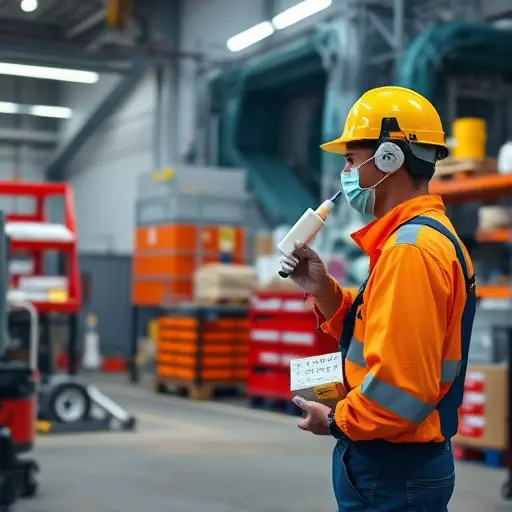Industrial Hygiene Sampling is a vital process for safeguarding employees by assessing workplace environments. It identifies health risks from chemical substances, dusts, noise, and other stressors through advanced sampling techniques like airborne particle counting, VOC analysis, and biomonitoring. Regular air quality testing and hazard monitoring ensure compliance with regulations, enhance employee well-being, and create safer work conditions. Employee exposure monitoring, which combines personal and area sampling, enables data-driven decisions to mitigate risks and maintain optimal air quality, utilizing key metrics like VOC concentration levels. This comprehensive approach is crucial for identifying and managing hazardous substances, preventing worker illnesses, enhancing safety, and adhering to standards.
Industrial hygiene sampling is a critical component of ensuring employee safety in the workplace. This comprehensive guide explores essential aspects of industrial hygiene, including strategies for employee exposure monitoring, techniques for workplace air quality testing, and methods for hazardous substance monitoring. By understanding these key areas, organizations can effectively mitigate risks, maintain regulatory compliance, and foster a safer working environment. Each section delves into best practices, tools, and metrics to empower professionals in managing occupational health hazards.
- Understanding Industrial Hygiene Sampling: A Foundation for Employee Safety
- Employee Exposure Monitoring: Strategies and Techniques
- Workplace Air Quality Testing: Tools and Metrics for Assessment
- Hazardous Substance Monitoring: Identifying and Mitigating Risks
- The Role of Sampling in Regulatory Compliance and Legal Defense
- Best Practices for Implementing an Effective Industrial Hygiene Program
Understanding Industrial Hygiene Sampling: A Foundation for Employee Safety
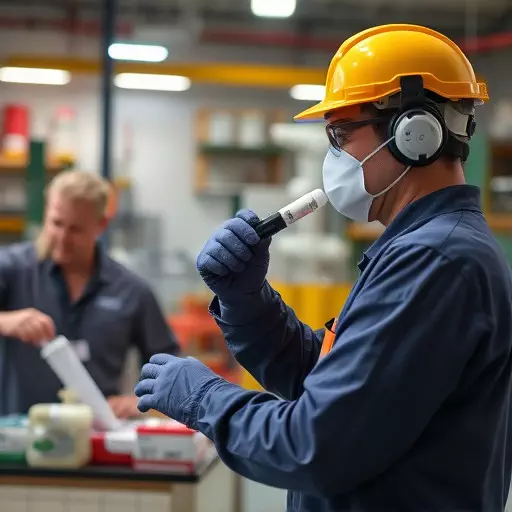
Industrial Hygiene Sampling serves as a cornerstone in ensuring employee safety by monitoring and assessing workplace environments. It involves systematic collection and analysis of samples from various sources, such as air, surfaces, and biological materials, to gauge potential hazards to which workers may be exposed. This process is vital for identifying risks associated with chemical substances, dusts, noise, or other stressors that could negatively impact health over time.
By employing techniques like airborne particle counting, volatile organic compound (VOC) analysis, and bio monitoring, companies can effectively measure employee exposure to hazardous substances. These data are crucial for implementing appropriate control measures, such as improving ventilation systems, using personal protective equipment (PPE), or adjusting work practices. Regular workplace air quality testing and comprehensive hazard monitoring contribute to creating a safer working environment, enhancing employee well-being, and fostering compliance with occupational health regulations.
Employee Exposure Monitoring: Strategies and Techniques
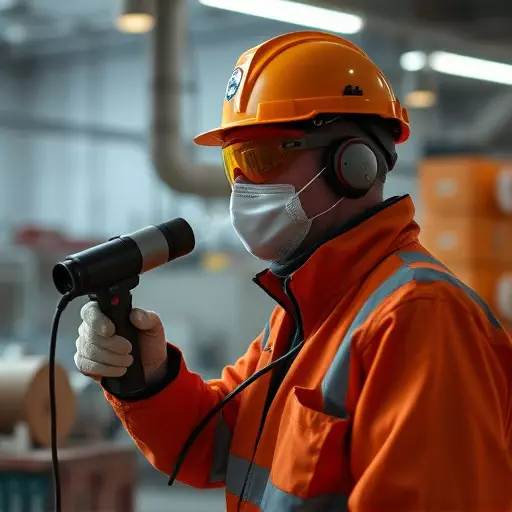
Employee Exposure Monitoring plays a pivotal role in ensuring workplace safety and maintaining optimal air quality. This process involves strategic sampling techniques to assess and quantify employees’ exposure to various hazardous substances present in the work environment. By employing advanced analytical methods, organizations can identify potential risks and take proactive measures to mitigate them. Regular workplace air quality testing is a key component of this monitoring, enabling employers to detect even trace amounts of dangerous chemicals or airborne particles.
Effective strategies include both personal exposure monitoring and area sampling. Personal monitoring involves wearing specialized equipment to track an employee’s direct contact with hazardous materials over time. Area sampling, on the other hand, collects air samples from specific work zones to gauge environmental contamination levels. Integrating these techniques allows for a comprehensive understanding of workplace hazards, facilitating data-driven decisions to improve ventilation systems, implement engineering controls, or provide appropriate personal protective equipment (PPE).
Workplace Air Quality Testing: Tools and Metrics for Assessment

Workplace Air Quality Testing is a critical aspect of industrial hygiene sampling, designed to identify and quantify potential hazards in the air employees breathe daily. This process involves employing specialized tools to collect samples from various locations within the workplace. Tools range from simple pumps that draw air into collection media like filters or vials, to more complex systems using real-time sensors for gas detection.
Metrics used in assessment include concentration levels of specific pollutants and contaminants, often expressed as parts per million (ppm) or micrograms per cubic meter (µg/m³). Hazardous substance monitoring focuses on regulated substances such as volatile organic compounds (VOCs), toxic metals, and respirable particles, which can pose significant health risks to employees through inhalation. Regular air quality testing enables employers to ensure compliance with occupational safety standards, implement effective control measures, and ultimately, protect worker health by minimizing exposure to hazardous substances.
Hazardous Substance Monitoring: Identifying and Mitigating Risks
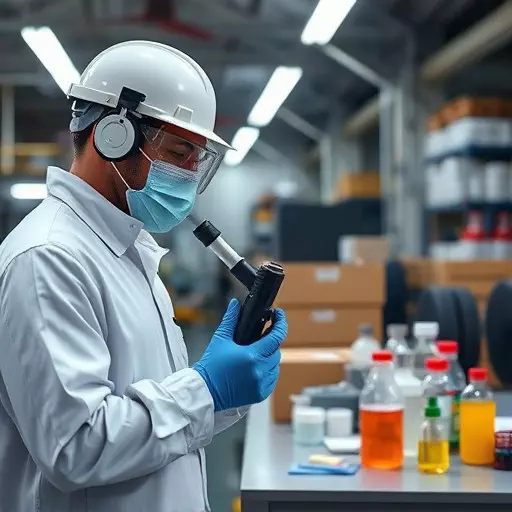
Industrial hygiene sampling plays a pivotal role in ensuring workplace safety by facilitating Hazardous Substance Monitoring (HSM). This process involves identifying and assessing the presence and levels of hazardous substances in the work environment, such as chemicals, gases, or particulate matter. Effective HSM is crucial for mitigating risks associated with employee exposure to these substances. Regular workplace air quality testing forms a critical component of this monitoring, helping employers understand the potential health impacts on their workforce.
Through strategic sampling techniques, industrial hygienists collect data that enables them to evaluate whether exposure limits are being exceeded and take appropriate action. This proactive approach not only protects employees’ health but also ensures compliance with occupational safety regulations. By integrating employee exposure monitoring into their risk management strategies, organizations can create safer working conditions, promote well-being, and maintain a positive reputation in the face of increasing public awareness about workplace hazards.
The Role of Sampling in Regulatory Compliance and Legal Defense
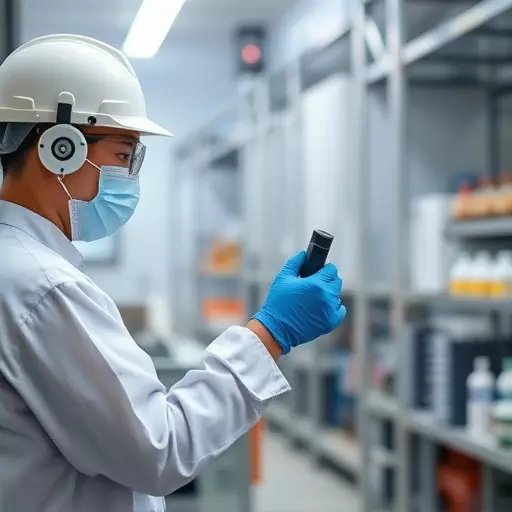
Best Practices for Implementing an Effective Industrial Hygiene Program
